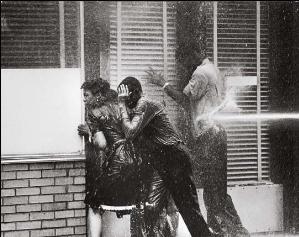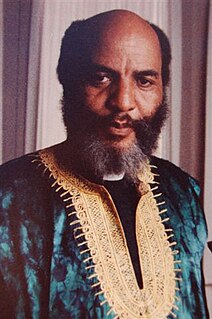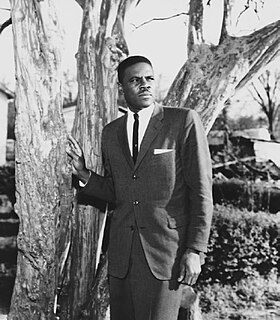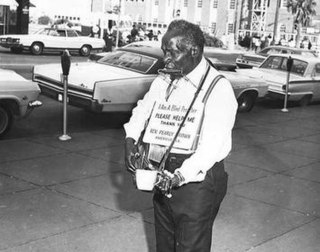Related Research Articles

The civil rights movement was a political movement and campaign from 1954 to 1968 in the United States to abolish institutional racial segregation, discrimination, and disenfranchisement throughout the United States. The movement had its origins in the Reconstruction era during the late 19th century, although it made its largest legislative gains in the 1960s after years of direct actions and grassroots protests. The social movement's major nonviolent resistance and civil disobedience campaigns eventually secured new protections in federal law for the civil rights of all Americans.

Leesburg is a city in Lee County, Georgia, United States. The population was 3,480 at the 2020 census, up from 2,896 at the 2010 census. The city is the county seat of Lee County and is part of the Albany, Georgia Metropolitan Statistical Area.

Americus is the county seat of Sumter County, Georgia, United States. As of the 2020 census, the city had a population of 16,230. It is the principal city of the Americus Micropolitan Statistical Area, a micropolitan area that covers Schley and Sumter counties and had a combined population of 36,966 at the 2000 census.

The Student Nonviolent Coordinating Committee was the principal channel of student commitment in the United States to the civil rights movement during the 1960s. Emerging in 1960 from the student-led sit-ins at segregated lunch counters in Greensboro, North Carolina, and Nashville, Tennessee, the Committee sought to coordinate and assist direct-action challenges to the civic segregation and political exclusion of African Americans. From 1962, with the support of the Voter Education Project, SNCC committed to the registration and mobilization of black voters in the Deep South. Affiliates such as the Mississippi Freedom Democratic Party and the Lowndes County Freedom Organization in Alabama also worked to increase the pressure on federal and state government to enforce constitutional protections.

The Southern Christian Leadership Conference (SCLC) is an African-American civil rights organization based in Atlanta, Georgia. SCLC is closely associated with its first president, Martin Luther King Jr., who had a large role in the American civil rights movement.

A sit-in or sit-down is a form of direct action that involves one or more people occupying an area for a protest, often to promote political, social, or economic change. The protestors gather conspicuously in a space or building, refusing to move unless their demands are met. The often clearly visible demonstrations are intended to spread awareness among the public, or disrupt the goings-on of the protested organisation. Lunch counter sit-ins were a nonviolent form of protest used to oppose segregation during the civil rights movement, and often provoked heckling and violence from those opposed to their message.
Clarence Jordan was an American farmer and New Testament Greek scholar, was the founder of Koinonia Farm, a small but influential religious community in southwest Georgia and the author of the Cotton Patch paraphrase of the New Testament. He was also instrumental in the founding of Habitat for Humanity. His (2nd) cousin, Hamilton Jordan, served as White House Chief of Staff during the Jimmy Carter administration.

The Birmingham campaign, also known as the Birmingham movement or Birmingham confrontation, was an American movement organized in early 1963 by the Southern Christian Leadership Conference (SCLC) to bring attention to the integration efforts of African Americans in Birmingham, Alabama.

James Luther Bevel was a minister and leader of the 1960s Civil Rights Movement in the United States. As a member of the Southern Christian Leadership Conference (SCLC), and then as its Director of Direct Action and Nonviolent Education, Bevel initiated, strategized, and developed SCLC's three major successes of the era: the 1963 Birmingham Children's Crusade, the 1965 Selma voting rights movement, and the 1966 Chicago open housing movement. He suggested that SCLC call for and join a March on Washington in 1963. Bevel strategized the 1965 Selma to Montgomery marches, which contributed to Congressional passage of the 1965 Voting Rights Act.

Southland Academy is a private, co-educational, non-sectarian Christian college preparatory day school in Americus, Georgia, United States. It enrolls over 600 students in grades K through 12, covering ages 4 through 19. It was founded in 1967 as a segregation academy.
The Albany Movement was a desegregation and voters' rights coalition formed in Albany, Georgia, in November 1961. This movement was founded by local black leaders and ministers, as well as members of the Student Nonviolent Coordinating Committee (SNCC) and the National Association for the Advancement of Colored People (NAACP). The group were assisted by Martin Luther King Jr. and the Southern Christian Leadership Conference (SCLC). It was meant to draw attention to the brutally enforced racial segregation practices in Southwest Georgia. However, many leaders in SNCC were fundamentally opposed to King and the SCLC's involvement. They felt that a more democratic approach aimed at long-term solutions was preferable for the area other than King's tendency towards short-term, authoritatively-run organizing.
Prathia Laura Ann Hall Wynn was an American leader and activist in the Civil Rights Movement, a womanist theologian, and ethicist. She was the key inspiration for Martin Luther King Jr.'s "I Have a Dream" speech.

Golden Asro Frinks was an American civil rights activist and a Southern Christian Leadership Conference (SCLC) field secretary who represented the New Bern, North Carolina SCLC chapter. He is best known as a principal civil rights organizer in North Carolina during the 1960s.
Zev Aelony was an American activist involved in the Civil Rights Movement. He was an organizer of the civil rights student group Students for Integration, a CORE Soul Force Member, a Freedom Rider, and one of the Americus Four who faced a death penalty for helping citizens legally vote.
The history of the 1954 to 1968 American civil rights movement has been depicted and documented in film, song, theater, television, and the visual arts. These presentations add to and maintain cultural awareness and understanding of the goals, tactics, and accomplishments of the people who organized and participated in this nonviolent movement.

ReverendPearly Brown was an American singer and guitarist, known primarily as a street performer. He also played harmonica and accordion. Brown's repertoire included gospel blues, blues, country, and spirituals. His bottleneck style of slide guitar inspired Georgia rock and roll musicians. He performed at the Newport Folk Festival, Carnegie Hall, and—as one of the first African American performers—the Grand Ole Opry.

The Leesburg Stockade was an event in the civil rights movement in which a group of African-American teenage and pre-teen girls were arrested for protesting racial segregation in Americus, Georgia, and were imprisoned without charges for 45 days in poor conditions in the Lee County Public Works building, in Leesburg, Georgia. The building was then called the Leesburg Stockade, and gave its name to the event. The young prisoners became known as the Stolen Girls.
Robert "Bob" Mants, Jr. was an American civil rights activist, serving as a field secretary for the Student Nonviolent Coordinating Committee (SNCC). Mants moved to Lowndes County, working for civil rights for the remainder of his life. Lowndes County contained the majority of the distance covered by the 1965 Selma to Montgomery march, and was then notorious for its racist violence.
Prior to the civil rights movement in South Carolina, African Americans in the state had very few political rights. South Carolina briefly had a majority-black government during the Reconstruction era after the Civil War, but with the 1876 inauguration of Governor Wade Hampton III, a Democrat who supported the disenfranchisement of blacks, African Americans in South Carolina struggled to exercise their rights. Poll taxes, literacy tests, and intimidation kept African Americans from voting, and it was virtually impossible for someone to challenge the Democratic Party, which ran unopposed in most state elections for decades. By 1940, the voter registration provisions written into the 1895 constitution effectively limited African-American voters to 3,000—only 0.8 percent of those of voting age in the state.
References
- 1 2 Americus movement New Georgia Encyclopedia
- 1 2 3 4 5 6 7 George, Bradley; Blankenship, Grant (July 19, 2016), "The Girls Of The Leesburg Stockade", GPB News, NPR .
- 1 2 3 4 Stolen Girls remember 1963 in Leesburg, WALB, July 24, 2006.
- 1 2 3 "Stolen Girls: Footsoldiers inducted into Hall of Fame", Selma Times-Journal, March 6, 2007.
- 1 2 Seeger, Pete; Reiser, Bob (1989), Everybody Says Freedom: A history of the Civil Rights Movement in songs and pictures, W. W. Norton & Company, p. 97, ISBN 9780393306040 .
- ↑ Staff Reports (March 6, 2007). "'Stolen Girls': Footsoldiers inducted into Hall of Fame". The Selma Times- Journal. Retrieved March 6, 2018.
- ↑ "Leesburg Stockade Girls to be part of Smithsonian publication", Americus Times-Recorder, March 25, 2016.
- ↑ Schwartz, Heather (2017). Locked Up for Freedom: Civil Rights Protesters at the Leesburg Stockade. Minneapolis, Minnesota: Millbrook Press. pp. Page 6. ISBN 9781467785976.
- ↑ "Americus Movement". crdl.usg.edu.
- ↑ "Americus Movement".